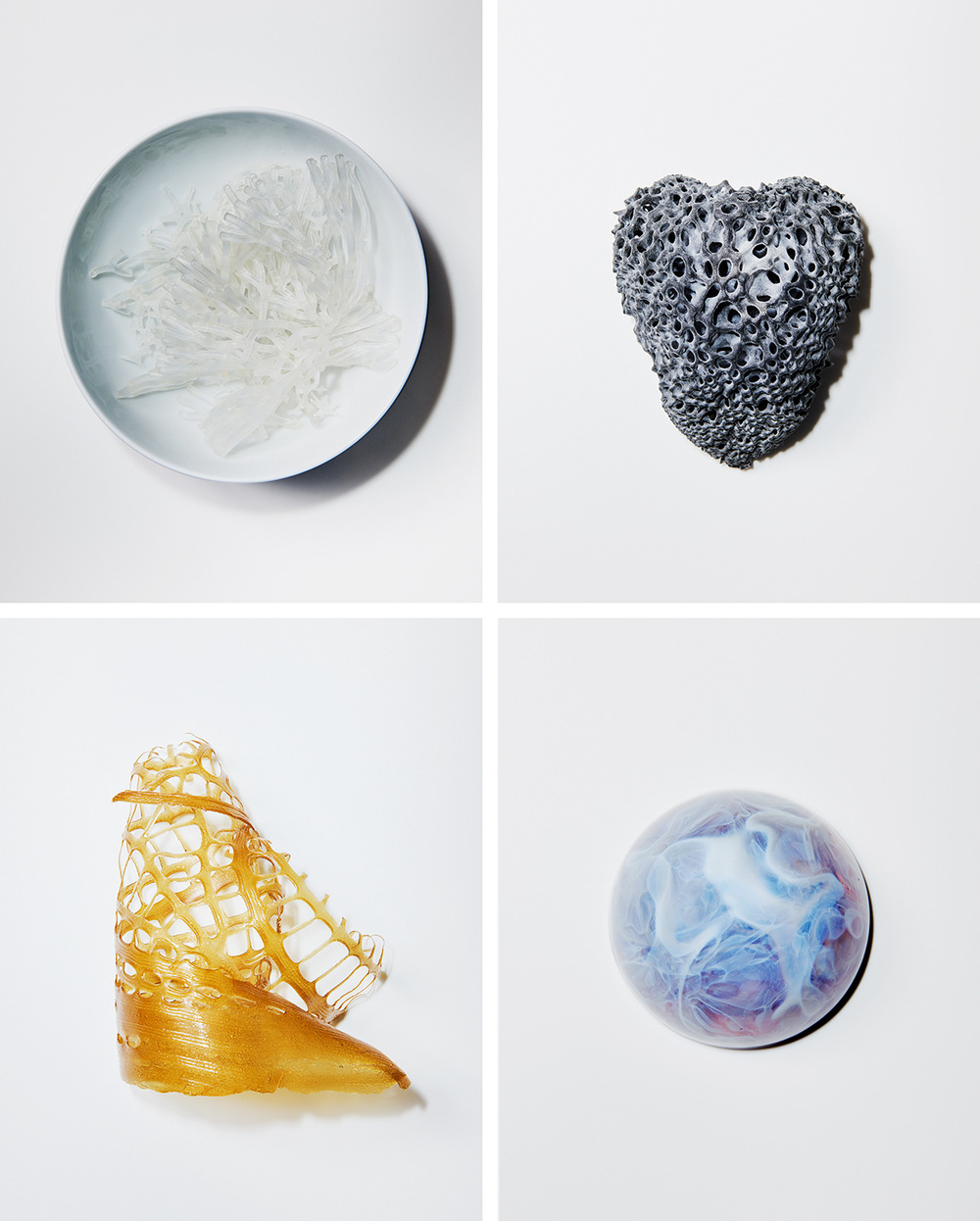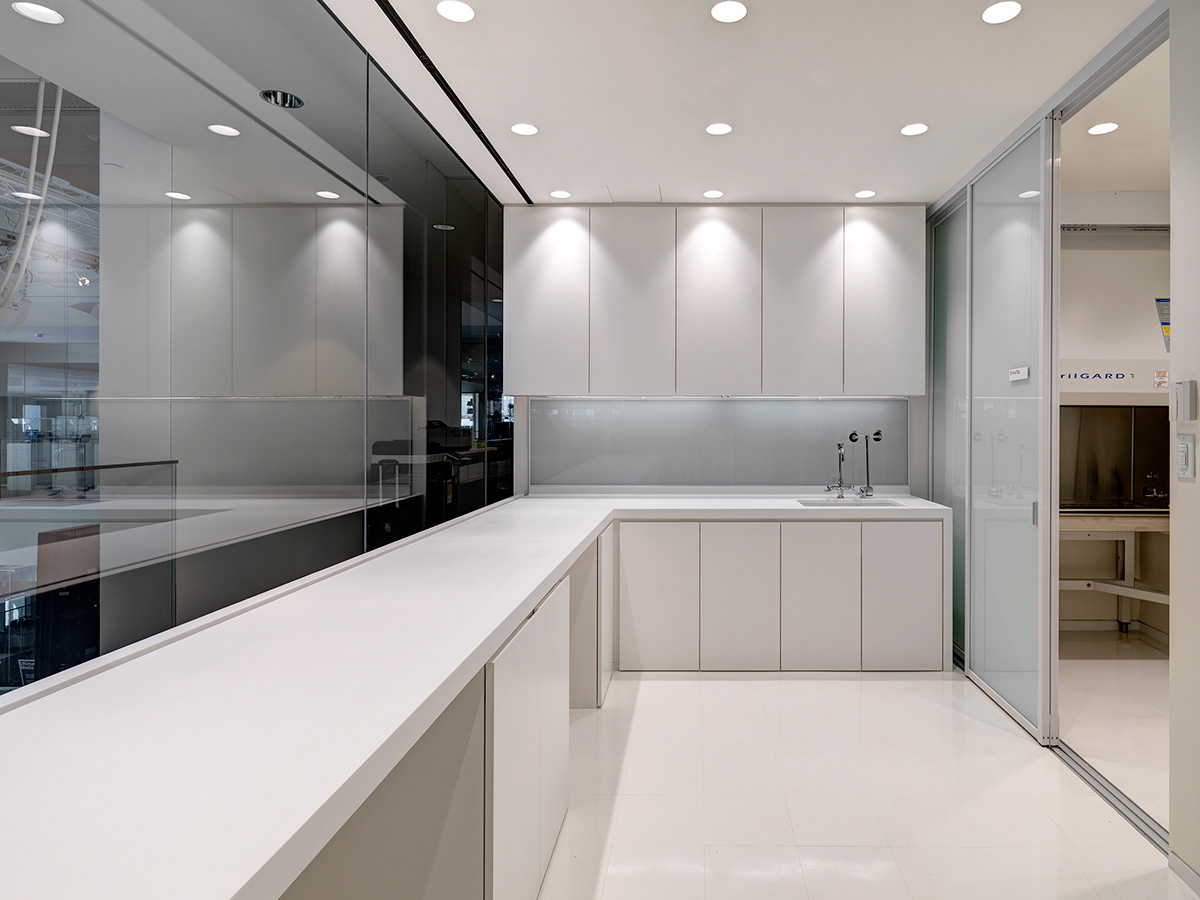WLA: Wet Lab Atelier
Wet Lab Atelier : A New Lab for Design at the intersection of Synthetic Biology & Additive Manufacturing
THE ENVIRONMENT
Wet Lab Atelier (WLA) is a first of its kind environment that blends two architectural typologies—a Biosafety Level 2 (BL2) wet lab and a fab lab atelier—enabling collaborations between biologists, architects, and designers within a single space. The tools it hosts are as ‘chimeric’ as the space itself: in it you may find a KUKA PCR machine (a 6-degrees of freedom robotic thermocycler), an industrial scale bio printer, or even a colony of bacterial construction workers controlled by optical or thermal patterning. The space, as well as the tools, techniques, and technologies it contains, supports the creation of new design processes and products across scales—from cells to building skins—that combine printing with growing. This tight integration between top-down additive manufacturing and bottom-up biological growth enables the generation of new forms of research at the intersection of computational design, additive manufacturing, and synthetic biology. Unlike traditional biology labs, the WLA is not restricted to any scale, functionality, or organism. Instead, it contains the tools to explore templating genetically and environmentally.

THE RESEARCH
Novel additive manufacturing technologies are enabling design and production at nature’s scale. Using 3D printing, for example, we can seamlessly vary the physical properties of materials at the resolution of a sperm cell, a blood cell, or a nerve cell. Stiffness, color, transparency, conductivity, even smell and taste, can be individually tuned for each 3D voxel within a physical object. The generation of objects is therefore no longer limited to assemblages of discrete parts comprising homogeneous properties. Like organs, objects can be composed of materials characterized by geometrical variation, material heterogeneity and multi-functionality. In our research we demonstrate how controlled variation of geometric and physical properties at high spatial resolution can be achieved through a combination of computational growth modeling, multi-material bitmap printing, and biological augmentation. Results point toward design possibilities that lie at the intersection of computational design, additive manufacturing, and synthetic biology; with the ultimate goal of imparting biological functionality to 3D printed products. Examples of previous successful projects in the WLA space include the Silk Pavilion (an all silk made pavilion constructed with the help of 6,500 silkworms whose spinning paths were environmentally 'templated' via a robotically woven scaffold), Living Mushtari (a 3D printed fluidic wearable for genetically modified organisms) the Synthetic Apiary (a ‘perpetual spring’ environment for ‘templating’ honeycomb swarm construction), and Water-based Digital Fabrication platform (a robotically controlled multi-chamber extrusion system designed to deposit biodegradable composites with functional, mechanical and optical gradients across length scales, augmented with microorganisms for biofuel production, photosynthesis and carbon filtration).

Examples of previous successful projects in the WLA space include the Silk Pavilion (an all silk made pavilion constructed with the help of 6,500 silkworms whose spinning paths were 'templated' via a robotically woven scaffold), Living Mushtari (a 3D printed fluidic wearable for synthetic organisms) the Synthetic Apiary (a ‘perpetual spring’ environment for ‘templating’ honeycomb swarm construction), and Water-based Digital Fabrication platform (a robotically controlled multi-chamber extrusion system designed to deposit biodegradable composites with functional, mechanical and optical gradients across length scales, augmented with microorganisms for biofuel production, photosynthesis and carbon filtration).



CREDITS AND AFFILIATIONS
The Wet Lab Atelier was created through the joint efforts of Mediated Matter members Sunanda Sharma (lead RA), Chikara Inamura (lead RA), and Professor Neri Oxman, with Jessica Tsymbal (Director of Facilities) and Kevin Davis (Facilities Manager), and under the advisement of MIT Environmental Health and Safety including Lorena Altamirano. It was designed and built beginning in Fall 2014, and opened in January 2016. Current researchers inhabiting the WLA space include: Sunanda Sharma, Jorge Duro-Royo, Christoph Bader, Dominik Kolb, Rachel Smith, Zijay Tang and Joshua Jordan Van Zak.

